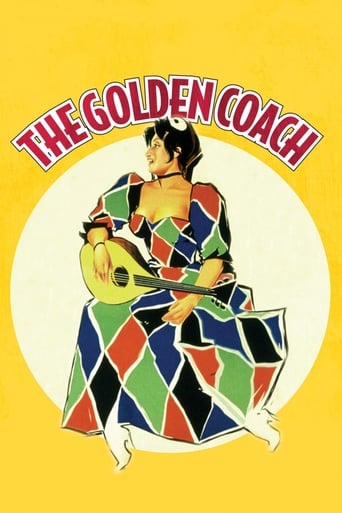Kirpianuscus
It is the film of Anna Magnani. and that is far to be a surprise. because it represents not only charming reconstruction of Commedia dell' Arte but the chance to admire a precise way to build the seduction of a woman discovering herself. it is a Jean Renoir film and his mark is obvious in each scene. it is the film of a great show and bitter commedy. but , if you see it with more profound interest, you have the chance to discover a profound exploration of art, society and significant things. and that transforms it in one of usefull films escaping from the circle of specific genre. because, in essence it is a wise parable about the clash between life and art.
LobotomousMonk
Renoir brought a new authorial voice to his work with The Diary of a Chambermaid which carried over into the "trilogy" of Carosse D'Or, French CanCan and Elena. The trilogy therefore is a bit of a misnomer despite Diary admittedly being more transitional than the three color productions which soon followed. Renoir introduces Carosse as a "fantasy" in the "spanish style" and it was at this time in his life where he was ready to dedicate himself to theater. The opening shot is a fantastic reflective juxtaposition of the theater stage and the cinema screen. Deep staging is important to the mise-en-scene, but there is little long take mobile framing. One-shot closeups, pov and shot-reverse-shot create a sense of psychological identification. The polyvocal system is less logical than Grande Illusion and more at the service of Magnani (much in the same way that Goddard was the focal point of Diary). A montage of shots connected through dissolves as well as the static camera solidify a sense of tableau fitting appropriately with the specularity of the commedia dell'arte theme. The viceroy is Camilla's muse sooner than the typical inverse. He provides a sensitivity that reminds of Le Baron in Bas Fonds... and his fascinations are just as patronizing and unsettling. There is a voyeuristic theme within the specular structure which raises questions about the great depth of field relating to privilege as opposed to realism. Renoir would take a new look at this at the end of Cancan when Gabin rehearses the performance in his mind from backstage. The Golden Coach is very much a film these for Renoir as he plays out the most important elements of his personal philosophy - that of internal and external truths and the masks that people wear to manage their relationship and mode of expression. For a fun, light film there is a lot of powerful expression in Carosse D'Or.
farmhouse41
I saw the Italian version in Bologna in 2006, and have just seen the American DVD. The latter seems to be missing some footage at the end, does anyone know? I seemed to remember a more elegant ending, when Anna Magnani steps back on stage. The genius of this moment is that it is in fact the stage that is the real world, and all that she has been participating in with the three men she has dallied with is the illusion. I take this as a metaphor for the play of creation as described in the Bhagavad-Gita, Chapter 2, when Krishna says to Arjuna, "Be without the three gunas." So Camilla has come to understand this, has given up her attachment to material things, symbolized by the coach, and even to the whole rigmarole of worldly life, and goes back to her true essence, which is to be the witness to all this churning activity. By stepping out onto the proscenium, leaving all the muddle of the gunas behind, she becomes enlightened and can continue as she chooses, playing other roles if she likes, but with the knowledge she has gained in this past existence.
William J. Fickling
I saw this recently at a retrospective celebrating the 50th anniversary of the founding of Cahiers du Cinema, and I approached it with some trepidation. I didn't know if I would like it as much as Renoir's more famous films of the 30s, and I had previously found some of the color films he did in the 50s to be less accessible. I needn't have worried; this film is a masterpiece. The color is sumptuous and breathtaking; I have always like Technicolor, in which this film is shot, for the richness of its palette. The acting is brilliant and introduced me to some wonderful actors I have never heard of before. Well worth viewing.
